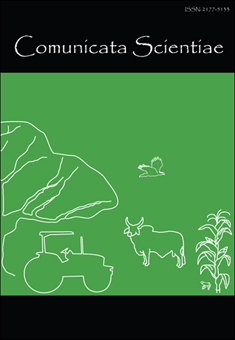Comportamento reprodutivo e materno de araras Canindé (Ara ararauna Linnaeus, 1758) mantidas em cativeiro para conservação
DOI:
https://doi.org/10.14295/cs.v4i4.92Keywords:
Conservação, araras, reproduçãoAbstract
A preservação de animais silvestres tem sido reportada por vários grupos de pesquisadores e organizações não governamentais no mundo. Dentro deste contexto, algumas espécies de araras são foco de trafico ilegal e comercio internacional que resultam em muitos animais mortos durante o transporte e diminuição expressiva da população de aves. É importante enfatizar que programas de conservação ex situ de animais silvestres, bem como educar garantindo a preservação da biodiversidade precisam ser incentivados. Assim, o objetivo desse trabalho foi revisar e descrever o comportamento reprodutivo e materno de araras Canindé relatando os procedimentos realizados no cativeiro conservacionista localizado nas Faculdades Assis Gurgacz, Paraná, Brasil. As observações e os dados foram registrados através de gravações de vídeos. Os resultados e condições mostrados neste trabalho podem indicar métodos que promovem boas condições para o sucesso na postura, eclosão e desenvolvimento do filhote até o seu desenvolvimento para essa espécie em cativeiro
Reproductive and maternal behavior of Caninde macaws(Ara ararauna)in captivity for conservation
Abstract
The preservation of the wild animals had been reported by many researchers groups and nongovernmentalorganization in the world. Inside this context, many Brazilian species of macaws arefocus of illegal traffic and international commerce that resulted in several deaths of birds duringtransport and expressive decrease of bird population. Is important to emphasize that conservationprograms ex situ of wild species and environmental education, guaranteeing the preservation ofthe biodiversity must be incentive. Thus, the objective of this work was review and described thereproductive and maternal behaviors of Caninde macaws relating the proceedings performed incaptivity of preservation localized in Assis Gurgacz Faculty, Parana, Brazil. The observations and thedata registered were performed by recorded videos. The results and conditions showed in this papermay indicate methods that promote good conditions the posture, eruption and development of thenest for this species in captivity.
Downloads
Downloads
Published
How to Cite
Issue
Section
License
All articles published may be reproduced or utilized in any form or by any means whether specified Comunicata Scientiae, author(s), volume, pages and year. The authors are responsible for all the statements and concepts contained in the article.




